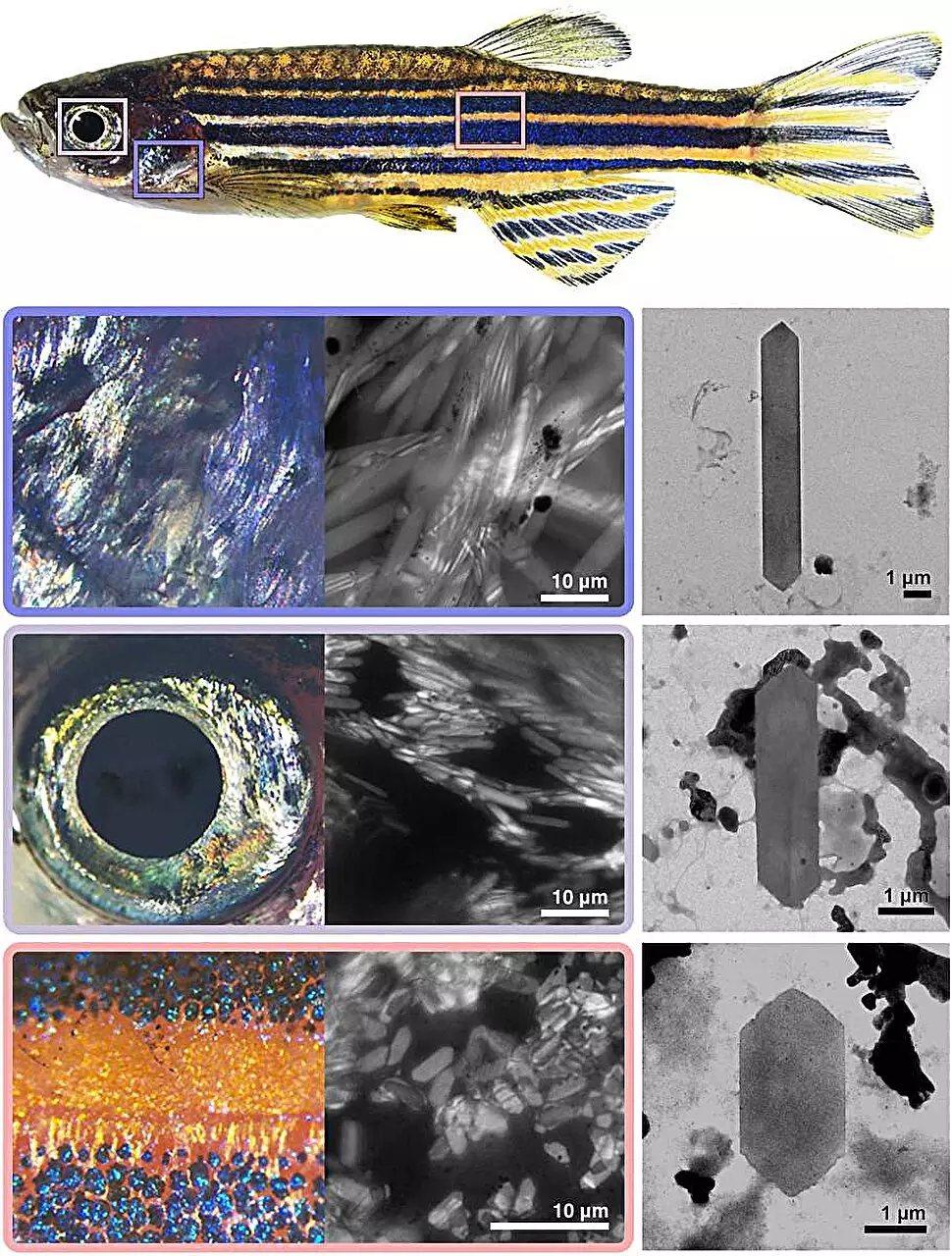At first glance, the raw and industrialized world of crystal production as depicted in popular media, particularly through characters like Walter White from “Breaking Bad,” seems a world apart from the natural processes seen in the animal kingdom. However, both realms share a common thread: the formation of crystals. While Walter White’s crystal creations lead to morally ambiguous outcomes, organisms such as fish, chameleons, and crabs produce vibrant, functional crystals that serve essential biological roles, including communication, camouflage, and thermal regulation. This juxtaposition of natural and unnatural crystal synthesis opens a fascinating discussion within the fields of biology and chemistry.
The study of crystal structures in nature has captivated researchers, particularly given that many biological crystals are fundamentally based on just two molecular components: guanine and hypoxanthine. The sheer diversity observed in these crystals prompts inquiry about the mechanisms behind their formation and the evolutionary advantages they confer to the organisms that produce them.
Recently published research in *Nature Chemical Biology* by a team at the Weizmann Institute of Science has delved deep into the enigmatic world of crystalline structures found in zebrafish—a species recognized for its aesthetic beauty and biological significance. The research focused explicitly on the different types of crystals found within various tissues of these fish, revealing that the shape, structure, and arrangement of each crystalline form are not merely incidental but are distinctly tailored based on their functional needs.
Dr. Dvir Gur, who led the research team, illustrated the varying characteristics of these crystals, such as the elongated crystals in the gills versus the shorter crystals found in the skin. This variability in crystallization leads to crucial differences in optical properties and functionality, suggesting that the zebrafish may serve as a model organism for studying crystal formation in living tissues.
One of the core findings of the zebrafish study was the influence of the guanine and hypoxanthine ratio on the crystals’ morphology. This relationship mirrors culinary skill; just as a baker balances ingredients to achieve distinct flavors and textures, the zebrafish’s cells modulate the proportions of these nucleotides to create specific crystal properties. Differences in the molecular ratios result in variations that significantly affect how the crystals interact with light, thereby impacting their utility within the fish’s physiological processes.
The researchers’ ability to replicate these natural crystalline forms in the lab by altering the ratios of guanine and hypoxanthine underlines the importance of understanding these fundamental molecular interactions. This artificial recreation of zebrafish crystals not only highlights the versatility of these building blocks but also provides insights for potential applications in material science, optics, and even medicine.
To further investigate how zebrafish manage to produce distinct ratios of guanine and hypoxanthine without compromising other cellular functions, the research team focused on iridophores—the crystal-producing cells. Rachel Deis, lead Ph.D. student on the project, made significant strides in identifying the unique protein profiles within these cells. The contrasting abundance of enzymes responsible for crystal synthesis compared to those found in non-crystal-producing cells indicates a highly specialized metabolic pathway tailored for crystal production.
Remarkably, zebrafish possess multiple enzymes for guanine formation, allowing these organisms to maintain a balance that would yield diverse crystal forms. This biological complexity is not only crucial for their survival in diverse aquatic environments but also poses broader implications for research in genetics and bioengineering, suggesting pathways for the design of biomimetic materials.
This groundbreaking research is a testament to the power of collaborative science, merging the expertise of biologists, chemists, and material scientists. The holistic approach enabled the team to unravel the intricate connections between genetics and crystal morphology. Following these revelations, we gain a deeper appreciation for the elegant solutions found in nature, offering us blueprints for developing advanced materials that could revolutionize various fields.
The zebrafish stands as a model organism not merely for its aesthetic appeal, but for the scientific revelations it offers into the inner workings of life at the molecular level. The insights gained from understanding how these small creatures produce an array of unique crystals sharpen our focus on nature’s elegant simplicity and boundless creativity. As researchers continue to investigate these remarkable natural processes, the potential for innovative applications in technology and medicine remains tantalizingly within reach.


Leave a Reply